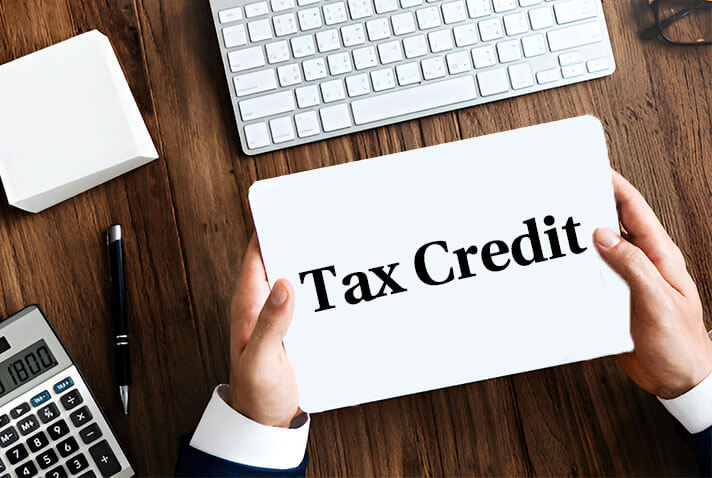News
What Investments Qualify for the Tax Credit?

Understanding Tax Credits
Tax credits are powerful tools for incentivizing taxpayers to make investments that align with broader economic, environmental, or social goals. Unlike tax deductions, which merely reduce the amount of income subject to taxation, tax credits directly reduce the tax owed, offering a dollar-for-dollar reduction. This makes them especially appealing for individuals and businesses looking to invest capital strategically.
Investments that qualify for tax credits can vary considerably, but they generally align with federal or state-level priority areas, such as renewable energy, innovation, and public welfare. Understanding the breadth of qualifying investments can help taxpayers make informed decisions that maximize tax savings while contributing to societal progress.
Qualifying Investments
Legislation defines the scope of investments that qualify for tax credits, which can vary by jurisdiction and fiscal policy objectives. Qualifying investments typically fall under categories promoting sustainable development, innovation, and heritage conservation. Each category often has specific criteria that taxpayers must meet to be eligible for the credit, emphasizing compliance and proper documentation.
Investors should thoroughly research available credits to determine eligibility. Government websites and financial advisors can provide guidance detailing the documentation and compliance standards required to claim these credits successfully. Various workshops and seminars are also available to assist potential investors in understanding the complete requirements and benefits of different tax credit programs. Specifically, understanding the nuances of the investment tax credit requires careful attention to detail and expert advice. Furthermore, investors should consider the long-term impact of these credits on their overall financial strategy, as they can significantly affect future tax liabilities and investment returns. It is also essential to consider the potential for recapture of the investment tax credit.
Renewable Energy Investments
Renewable energy projects are some of the most prominent beneficiaries of tax credits, reflecting a global shift towards sustainable energy solutions. The most common credits in this domain include the Investment Tax Credit (ITC) for solar energy systems and the Production Tax Credit (PTC) for wind energy investments. These credits are intended to lower the initial cost of transitioning to renewable energy.
The significance of these tax credits lies in their long-term environmental and economic benefits. Tax credits help reduce carbon footprints and reliance on fossil fuels by promoting adopting renewable technologies. Business owners and homeowners alike are encouraged to explore these opportunities to reduce long-term energy costs. Additionally, these credits often stimulate local economies by creating jobs and advancing technological innovation in the renewable energy sector.
Research and Development
Fostering innovation through research and development (R&D) is critical for economic progress, and tax credits are pivotal in encouraging such investments. The R&D Tax Credit offers significant savings for businesses that invest in developing new products, processes, or software, driving technological advancement and competitive advantage.
Qualifying activities under the R&D Tax Credit must meet specific criteria, including technical uncertainty and experimentation. Businesses that document their R&D efforts extensively can secure these credits, effectively reducing the overall cost of innovation. This credit incentivizes innovation and strengthens businesses’ competitive position in the global market by encouraging continual improvement and adaptability.
Historic Preservation
The Historic Preservation Tax Credit incentivizes the preservation and rehabilitation of historic buildings, ensuring that these cultural jewels endure for future generations. Projects that qualify typically involve certified landmark structures and must meet specified standards of restoration and usage.
These investments not only serve to maintain the cultural fabric of communities but also often stimulate local economies by revitalizing neighborhoods and attracting tourism. Property owners undertaking such projects should work closely with state historic preservation offices to navigate the qualification process. Beyond economic benefits, preserving historical architecture enriches cultural heritage, fostering a sense of identity and continuity within communities.
Energy Efficiency Improvements
Energy efficiency tax credits target investments that enhance buildings’ energy performance, providing incentives for upgrades such as improved insulation, high-efficiency windows, or energy-efficient HVAC systems. The goal is to reduce energy consumption and operational costs, yielding long-term savings.
These credits ease the financial burden of pursuing energy-efficient retrofits for residential and commercial properties, aligning cost savings with environmental responsibility. Individuals interested in these improvements should verify eligible expenses and ensure compliance with guidelines to secure the credits. With rising energy costs, there is a growing demand for energy-efficient solutions, making these credits increasingly valuable for consumers and businesses looking to reduce their carbon footprint and operational expenses.
Key Takeaways
- Tax credits directly reduce the tax owed, incentivizing strategic investments aligned with policy objectives.
- Qualifying investments often focus on renewable energy, R&D, historic preservation, and efficiency improvements.
- Investors should thoroughly research and document their initiatives to secure these credits and maximize savings.
- Tax credits offer financial benefits and promote sustainable development and community betterment.
- Engaging with experts and utilizing available resources ensures a better understanding and application of these benefits.
Understanding what investments qualify for tax credits empowers stakeholders to make informed decisions that benefit their economic interests and broader societal objectives. From reducing energy consumption to preserving cultural landmarks, tax credits enable impactful investments that embody the principles of responsible growth and innovation. By leveraging these credits, businesses and individuals can effectively contribute to a sustainable and prosperous future while enjoying significant tax benefits.
